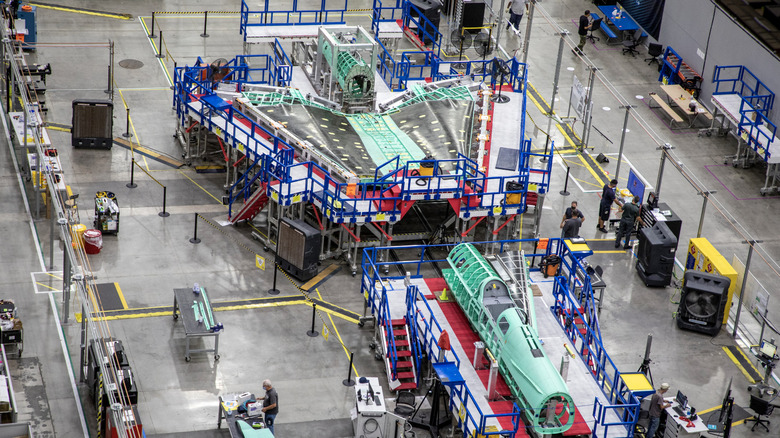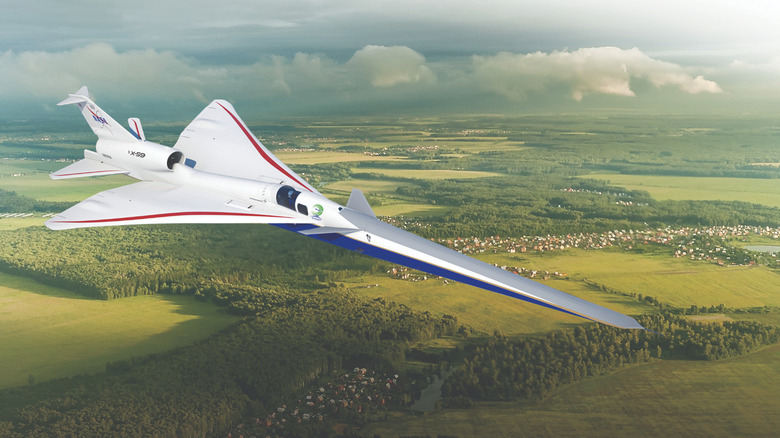How NASA's X-59 QueSST Could Help Bring Supersonic Travel To The Masses
Since 1947, when Air Force Maj. Chuck Yeager broke the sound barrier going 700 mph in a Bell X-1 aircraft, the study of supersonic flight has only advanced. Now, NASA is working on a project that, when completed, may lead to the proliferation of commercial supersonic flight — meaning air travel would become much faster than it is currently.
This plane, called the X-59 Quiet SuperSonic Technology (QueSST) aircraft, is a research craft in development by the Advanced Air Vehicles Program and the Integrated Aviation Systems Program. According to the organization, the program has two goals: to quiet the sound of the sonic boom associated with supersonic flight and record information about on-the-ground perception of the aircraft.
"Using this data, new sound-based rules regarding supersonic flight over land can be written and adopted, which would open the doors to new commercial cargo and passenger markets to provide faster-than-sound air travel," NASA wrote in the program's overview.
Testing the X-59
The X-59 has been developed by NASA in conjunction with Lockheed Martin's Skunk Works division. Its design, featuring a long, pointed nose-cone is expected to cut down on the sound that people on the ground will hear. "The X-59 is an experimental supersonic aircraft shaped to reduce the loudness of a sonic boom reaching the ground to that of a gentle thump. The X-plane accomplishes this by tailoring the volume and lift distribution to separate the shocks and expansions associated with supersonic flight," Lockheed Martin writes. It has just under a 30-foot wingspan, and with the nosecone is also a little over 99 feet long.
The aircraft has been in the works since 2018 and is expected to fly Mach 1.4 (925 mph) when it finally takes flight. The anticipated goal, according to Lockheed Martin, is to reduce the sound of a craft flying at supersonic speeds to a muted "heartbeat." The success of this project would mark a great step forward in commercial supersonic flight as it would reduce the level of noise on the ground that has thus far prevented the proliferation of widespread use.

